
Guests
- Sandra Cisnerosthe author of Woman Hollering Creek and The House on Mango Street. Born in Chicago, she is the daughter of a Mexican father and a Mexican American mother. She currently lives in San Antonio, Texas.
She’s “nobody’s mother and nobody’s wife.” That’s Sandra Cisneros, acclaimed poet and novelist. The recipient of two NEA fellowships and the MacArthur “Genius” Award, Cisneros is the author of “Woman Hollering Creek” and “The House on Mango Street.”
Transcript
AMY GOODMAN: Right now we turn to Women’s History Month. Today we’ll hear from acclaimed poet and novelist Sandra Cisneros. She is the author of House on Mango Street and Woman Hollering Creek, among other books. I had a chance to talk to her a few months ago when she came to Washington, D.C., to the National Women’s Museum.
AMY GOODMAN: Well, let me ask you: How did you become a writer?
SANDRA CISNEROS: I think what I visualized in my head when I was a child was having my name in the card catalog, so maybe it came out of a more vain desire than becoming a writer. I really just wanted my name in the card catalog in the public library. And I think, you know, becoming a writer is something you have to visualize in your head to make it real. And to me, the way that it became real was to see my name on an index card, and not just any index card in the card catalog, but one that was dirty. And that would mean that a lot of people had thumbed through it and looked at it in looking for me.
And that’s what I dreamed of and about, I guess, maybe at 10 years old, fifth grade. And I didn’t tell anybody I was writing. I just kind of did it on the sneak. And, you know, I think I did it in private because it mattered so much to me, and school was a place where people destroyed things that mattered to you. And at home, I had six brothers, so of course I wasn’t going to tell them, because they would torture me with that. So it was something I kept in a notebook.
AMY GOODMAN: Well, I am sure all over this country there are dirty index cards with your name on it, for those libraries that are not computer catalogued.
SANDRA CISNEROS: I have to tell you that, you know, when they all went to computers, I was so distressed. However, there are like a couple librarians out there in the boonies, like in Laredo, that are happy to show me their card catalogs.
AMY GOODMAN: Well, I wanted to go to a book that has certainly worn out some of those index cards, and it’s your book The House on Mango Street. It’s a classic now. It’s a brilliant book. And I was wondering if you could talk to our listeners a little about what this story is, who it’s about.
SANDRA CISNEROS: Well, House on Mango Street is a book that is about a young girl who is growing up in a neighborhood she hates and in a house that she particularly doesn’t want to belong to, that she doesn’t feel connected to, that she is ashamed of. And we follow her through these very poignant vignettes — I like to think that they’re poignant. Some of them are funny, and some are sad, and some are very wistful. And they’re anywhere from a paragraph to a couple of pages, but they’re pretty succinct.
And I was attempting, when I wrote that book, to try to capture that very nebulous age when you aren’t an adult and you aren’t a child and you belong in that twilight zone where, you know, perhaps for a day you are a child and the next day you have to become adult and then the day after that you go back to being a child. I was trying to write in the most poetic language I could use, but using simple language, something that was not the language you would see in books in universities, and perhaps that was the language used in my neighborhood, very simple language to create images that I hoped would be poetic and fierce and would remain in people’s memory.
There’s a chapter I usually read called “My Name.” And I’ll see if it comes to me.
“In Spanish my name means hope. In English it means too many letters. It means sadness, it means waiting. It is like the number nine. A muddy color. It is like the songs my father plays on Sundays when he is shaving, songs like sobbing.
“It was my great-grandmother’s name and now it is mine. She was a horse woman too, born like” — no, no, no, no.
AMY GOODMAN: Yeah, “born like me in the Chinese year…”
SANDRA CISNEROS: See, when I don’t have — “Chinese year of the horse – which is supposed to be bad luck if you’re born female — but I think this is a Chinese lie because the Chinese, like the Mexicans, don’t like their women strong.
“My great-grandmother. I would’ve liked to have known her, a wild horse of a woman, so wild she wouldn’t marry. Until my great-grandfather threw a sack over her head … Yes, that’s the way he did it. And the story goes she never forgave him. She looked out the window her whole life, the way so many women sit their sadness on an elbow. I wonder if she made the best with what she got or was she sorry because she couldn’t be all the things she wanted to be. Esperanza. I have inherited her name, but I don’t want to inherit her place by the window.
“At school they say my name funny as if the syllables were made out of tin and hurt the roof of your mouth. But in Spanish my name is made out of a softer something, like silver, not quite as thick as sister’s name — Magdalena — which is uglier than mine. Magdalena who at least can come home and become Nenny. But I am always Esperanza.
“I would like to baptize myself under a new name, a name more like the real me. Esperanza as Lisandra or Maritza or Zeze the X. Yes. Something like Zeze the X will do.”
There you go. I’m surprised I remembered as much as I did.
AMY GOODMAN: Sandra Cisneros, reading from her book The House on Mango Street. The House on —
SANDRA CISNEROS: Not quite reading, but remembering.
AMY GOODMAN: That’s right, remembering, reciting, remembering. You grew up in Chicago. Did you grow up in a community like the one you describe?
SANDRA CISNEROS: Well, you know, House on Mango Street began from a real place I remembered. And, you know, the question I get asked the most is “Is this true?” And it began from a real house and a real neighborhood and a real shame. But the book did not end where it began. The real neighborhood exists. And by the time I finished writing the book — I began it when I was in graduate school. I was 22 years old, 22, and finished it when I was 28 with my first NEA grant, that helped me to quit my job and concentrate on the writing. There were many places that I had traveled to by the time I finished the book, so I started peopling this real place with people from my twenties, with my students especially and with their neighborhoods. So, in essence, House on Mango Street is two neighborhoods, the one I grew up in, in Humboldt Park, Chicago, which is a predominantly Puerto Rican neighborhood, and the one I worked in, Pilsen, which is predominantly Mexican. So it’s a merging of different parts, different layers of my life.
AMY GOODMAN: Sandra Cisneros, author of a number of books, including Woman Hollering Creek and The House on Mango Street. Born in Chicago, she’s the daughter of a Mexican father, Mexican American mother. She currently lives in San Antonio, Texas. And we’ll continue with our conversation with her in just a minute, here on Pacifica Radio’s Democracy Now!
[break]
AMY GOODMAN: You’re listening to Pacifica Radio’s Democracy Now! I’m Amy Goodman, as we continue with our conversation with author Sandra Cisneros. She’s written Woman Hollering Creek and The House on Mango Street.
AMY GOODMAN: I read somewhere that you have often worked as a teacher for young people, young women who didn’t finish high school, and that perhaps some of the models in your book are some of the young women you taught.
SANDRA CISNEROS: Exactly. What happened was, you know, House began as a real place remembered, and I think I was trying to write a book in response to absences in my own books that I was reading in graduate school. By the time I got to teaching in Pilsen, my students’ lives were so overwhelming, I was just — I was shocked by the lives of my young women and my young men. They made my life look pampered.
So, what I did was I didn’t — I wasn’t a terrific social worker, but I was forced to be social worker as well as teacher and friend to them. I didn’t know what to do about their problems — women who came to class with bruises or young women who were 17 and had three kids already or, you know, parents who wanted their daughters to quit school so they could start working and help them out. You know, I just felt like crying, and I didn’t know what to do to save them from their lives.
So, out of my own ineptitude and rage and sadness, I took their stories and I put them in this little book I was writing called House on Mango Street. And I think the questioning that Esperanza has in the book — you know, she doesn’t know which way she’ll go when she talks about Minerva who writes poems — was really the author looking around her and thinking, “God, there’s got to be another way than this.” And I didn’t have answers. I just had questions.
AMY GOODMAN: You mentioned that you got an NEA grant, a grant from the National Endowment for the Arts. That has been very controversial over the years, the NEA and the whole right-wing attack on it. What difference did it make in your life? I mean, how important is something like that?
SANDRA CISNEROS: You know, I have to tell you, if you’re a struggling writer, as I was — you know, I didn’t have a trust fund, unlike my classmates in Iowa. And I didn’t have relatives who knew somebody at a publishing house. My parents were not part of the publishing industry, as many of my classmates were. You know, my father was an upholsterer. He couldn’t have introduced me to anybody who could help me get published. I had never met writers before. You know, I didn’t have that kind of connection.
And NEA arrived at a time in my life when I was so involved in working in the community, and I had a day job helping to recruit minority students into my old alma mater. And meanwhile, I was also involved with students and with community arts. And suddenly the NEA came, that kind of shook me to say, “You know, remember you’re a writer, and you should be writing.” And it allowed me to quit my job and to finish that back-burner project, that House on Mango Street book. And what it did for me was to confirm that I was really a writer, that the writing mattered, that someone who wasn’t related to me thought that. And sometimes when, you know, you’re involved in communities that are in great distress or you’ve got a job that isn’t a job, it’s like being in the Army, it’s a career, night and day, it’s good to be reminded of that. And the NEA, when I was 28, allowed me to finish House on Mango Street.
Later, when I was 33, I would again receive an NEA, this time for fiction, because the first time I won it in poetry. And again it swooped down, and it came at a time when I was just hanging by my fingernails in my life, when I had a very low self-esteem and, you know, struggling to just pay the rent. And, you know, sometimes you forget that your talent is as a creative person, because you don’t get paid for the creative work you do. So the NEA was, more than anything, more than the money, although that helped me a great deal, was the affirmation that all these years I had spent, all these hours I had spent scribbling, weren’t a waste of time, like my father would say, or like the relatives or other people that didn’t understand what I was doing as a woman artist, but that I was truly an artist and I should continue doing it. And that’s what’s important about the NEA.
AMY GOODMAN: On that second grant, did you use it to travel in Europe?
SANDRA CISNEROS: The first grant, I used. In the beginning, there weren’t restrictions on how one could use it. And I have to say that repercussions of that travel had changed my life. Not only did I finish my first book in Europe, but I lived in many places, I met so many people. I lived in Bosnia. I lived in Sarajevo, specifically. And that war touched me on such a deep and personal level and involved me in a way that I would not have been had I not lived there, if I did not have a best friend there, if I didn’t know the streets, if I didn’t recognize the buildings that have been shelled and bombed. That’s my town, too. And it has changed my politics and my sense of being connected to other places of wars throughout the planet.
AMY GOODMAN: Can you talk a little more about that? We didn’t talk much, actually, about your own background. If you could talk about your parents’ background, where they came from, and how that connects to Bosnia?
SANDRA CISNEROS: Well, my mother is a Mexican American woman born in Chicago of a working-class family, and she’s first-generation. Her parents come from a rural community that fled during the Mexican Revolution. My grandfather came to Chicago to work the railroads, as many immigrants did, and he did so until his old age. My father, however, was born in Mexico, and his first language was Spanish, unlike my mother, whose first language was English. And he came to the United States during World War II, served in the U.S. Army and became a citizen that way. They met in Chicago and married, and here we were. Here we are.
So, I have this background of my father who comes from Mexico City. And people from Mexico City are very cosmopolitan. They have a reputation for being pretentious and thinking that they are the center of the universe. And my mother’s family is much more working-class and humble. So, that’s my background. My father was an upholsterer until his retirement, and my mother was a housewife and raised seven children.
AMY GOODMAN: And six of them were boys, and then there was you?
SANDRA CISNEROS: Six boys. And she actually birthed eight children, and a sister died in infancy. But yes, seven of us, six boys and me.
AMY GOODMAN: Well, as a Chicana writer, I would guess that people don’t ask you much about Bosnia.
SANDRA CISNEROS: I mean, I think people don’t realize I lived in Bosnia. I mean, they don’t realize that about Chicanos, that we’re global. You know, my friends are painters, and they’ve gone to school in Peru or done residencies in Italy. And that’s true of many of my friends. You know, so my having gone to a place like Bosnia is not unusual for the artist, and especially not for Chicano artists, because I think we make connections with communities that are like us, that are communities in conflict, communities that are living between worlds, so to speak.
AMY GOODMAN: Can you tell me a little about your community in San Antonio, Texas? I understand that you painted your house purple.
SANDRA CISNEROS: Yes, I did. Well, I didn’t really paint it purple. I painted it blue going into violet, and which some people call purple and that I call periwinkle. It doesn’t look purple to me. It looks blue. So, you know, I don’t want the listeners to think of this big Barney-like house, you know, just so you get some clarity here as to color, OK?
AMY GOODMAN: Well, what —
SANDRA CISNEROS: Yes, I painted it this periwinkle color.
AMY GOODMAN: And what caused the controversy?
SANDRA CISNEROS: Well, the controversy is that if my house was on the other side of the driveway, it would have been fine for me to paint it periwinkle or polka dot or plaid, except that it’s located where it is, which happens to be on the boundaries of a historic neighborhood, the King William neighborhood. And even though we applied for permission for these colors and went through the paperwork, it was never finally approved. I was not notified of this until after we were slapping on the last bit of paint on the roof. So, my house was in controversy because it had not been approved by the Historic Preservation Office.
However, I was told how I could approve it by just doing some research. And when I did research, I found out that the Historic Preservation Office was preserving the history of some people in San Antonio and not all people as their bylaws claimed. And the gross absence of the preservation of Mexican people was apparent to me once I did my research. So, my challenge was that I didn’t mind painting my house a historical color, but I thought that their pallet should include the history of architecture of people of Mexican descent. And the pallets they were giving me were of New England and European descent. So, really, it’s a question about whose history are we preserving. That’s why it’s created such a stir. We see — it’s, I think, a question that’s happening globally when we look at preservation.
AMY GOODMAN: And in the process, I guess you made a little history in San Antonio yourself.
SANDRA CISNEROS: Well, I didn’t mean to, but — you know, I didn’t mean to cause a fuss. Really, that’s the last thing I need when I’m writing a novel. But as I did my research, it just seemed to me there was something wrong with the picture here, especially when you looked at the communities that had been destroyed, cut off by freeways, neglected. They happen to be the communities of people of Mexican descent. So, you know, my question to them was that, you know, I thought I was painting my house historical, because purple is historical to us, because it goes back to the Pyramids.
AMY GOODMAN: We’re talking to Sandra Cisneros. She is an author and a poet. Her books include The House on Mango Street, Woman Hollering Creek and Loose Woman. I was very touched by the description of you about the author in The House on Mango Street. At the end, after it lists all of the — your writings and poetry, it says, “The daughter of a Mexican father and a Mexican-American mother, and sister to six brothers, she is nobody’s mother and nobody’s wife.” What difference has that made on your writing?
SANDRA CISNEROS: Well, when I wrote that bio note, I remember when I — it first was published by Random House, and it was my first bio note, and they usually ask the author to write it themselves. I was teaching a class of Latina women in literature at the University of Michigan at Ann Arbor, and I asked my students, “What do you want to know about an author when you look at their author’s note?” And my students said that they wanted to know how did this woman — how was she able to write this book, what elements of her life led her, allowed her to write this book, because they knew how difficult it was. And I thought that was a good point, that we ought to have in those bio notes not just where she lives and who she happens to be the wife of and mother of, but the elements that have allowed her to arrive at that moment in history to create this book. So I thought of all the things that were important in my life, and I do have to say that being nobody’s mother and no one’s wife was terribly important to my liberty to write that book.
AMY GOODMAN: Well, in a sense, you’ve become a mother to many people. You, in particular, stand out as one who have influenced many, many young writers through your teaching, perhaps writers we’ll see in 10 years’ time. Is that an important part of your work?
SANDRA CISNEROS: Well, you know, to me, the important part, for me, of writing was to help to heal a community that was in pain. And my community is hemorrhaging. You know, we’re in a state of crisis. When I was writing House, I really didn’t know how teaching poetry or writing poetry or writing my little stories was going to change anything. And now I see that the stories go out there like notes in a bottle. I don’t know what shore they reach. Sometimes I find out, and sometimes I don’t. And letters come back to me from new and old readers. And I’m seeing that the work that I intended is happening, that it is reaching the community I wanted it to reach, warning, perhaps, and guiding people and sometimes giving people permission to express themselves and get by a day. And that’s important to me.
AMY GOODMAN: In one interview you did, Sandra Cisneros, you talk about what you advise your students, about pretending they’re sitting at the kitchen table in their pajamas when they write. It was wonderful advice.
SANDRA CISNEROS: Well, you know, I do that for myself, Amy, because sometimes I get terrified of the page. That happens a lot for people of color or working-class people. They’re frightened of writing because they’ve been made to feel that their speaking voice isn’t good enough, that they’ve got to sound like this voice in the book, which is usually some upper-class or middle-class or some academic voice or a male voice or whatever that voice is that is the professional voice. And, you know, the way that you talk at home, that doesn’t count.
So, for myself, and as an exercise for my students, who sometimes, you know, write things that don’t sound like them, that sound out of place, like they’re wearing someone else’s clothes, in order to get them to speak from their own voice, I do this exercise where I’ll ask them, “Well, imagine you’re sitting at a kitchen table, and the table is dirty, and you’re wearing whatever it is you go to sleep in, whether that’s an old T-shirt or your father’s pajamas that shrank in wash or nothing or whatever it is you wear to go to sleep in. You’re sitting at that table, at that dirty kitchen table. Who could sit across from you, and you wouldn’t have to get up and get dressed, and you wouldn’t have to get a dish towel and clear off the table, you wouldn’t have to do anything, you would just sit and put your elbows up on that kitchen table, and you would just talk?”
That’s the voice I want them to use on the page and to imagine they’re talking to that one person. No one else is going to see it but that one person. And they should move their hand across the page as quickly as possible. And even if they make a mistake talking, they should put that in there, too. So, even if you put the “well” and the “you know”s and “wasn’t exactly like that,” put that in there, too. Your hand is just going to be your tape recorder, and you’re going to talk the piece, talk it, even if you have to talk it out loud. In fact, sometimes you may have to do that to get started. That’s your voice. And you should write in your pajamas, you know, metaphorically speaking, in that voice that you would use. That’s where your writing should come from. Don’t worry about punctuation, spelling. Just come from that safe place. So, you write as if you are talking to your best friend. And when you finish that, you edit as if you’re going to be read by your enemy. That’s my advice.
AMY GOODMAN: Sandra Cisneros, author and poet. She’s author of a number of books, including The House on Mango Street, which is published by Vintage Contemporaries, as is Woman Hollering Creek. Also, Loose Woman is hers, and My Wicked, Wicked Ways, which is a book of poetry.
You are listening to Pacifica Radio’s Democracy Now! And if you’d like a copy of today’s show, you can call 1-800-735-0230. That’s 1-800-735-0230. Why don’t you visit our website? We’re at www.pacifica.org. That’s www.pacifica.org. Also, you can email us at democracy@pacifica.org. That’s democracy@pacifica.org. And tomorrow, tune in to Democracy Now! We’ll have a rare interview with former Haitian President Jean-Bertrand Aristide. By the way, for those of you who’d like to get in touch with School of the Americas Watch, their number is 706-682-5369. That’s School of the Americas Watch outside Fort Benning, Georgia, at 706-682-5369. Democracy Now! is produced by Dan Coughlin, with Jeremy Scahill. Errol Maitland is our engineer; Julie Drizin, our executive producer; Michelle Garcia, our webmeister. I’m Amy Goodman. Thanks for listening to another edition of Pacifica Radio’s Democracy Now!

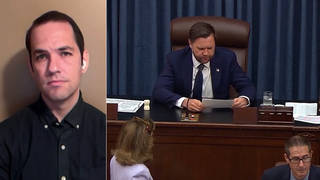


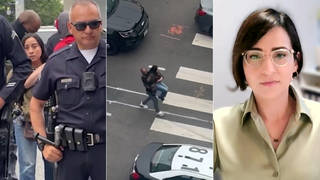
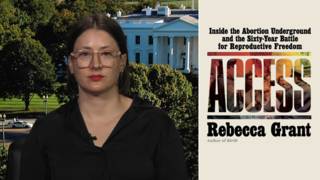
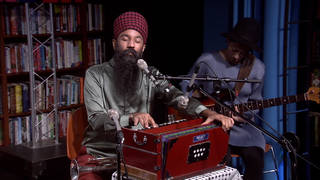

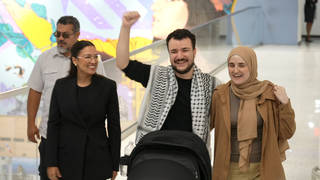

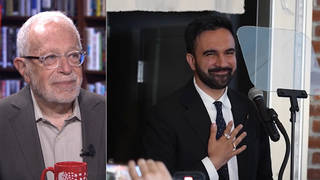


Media Options